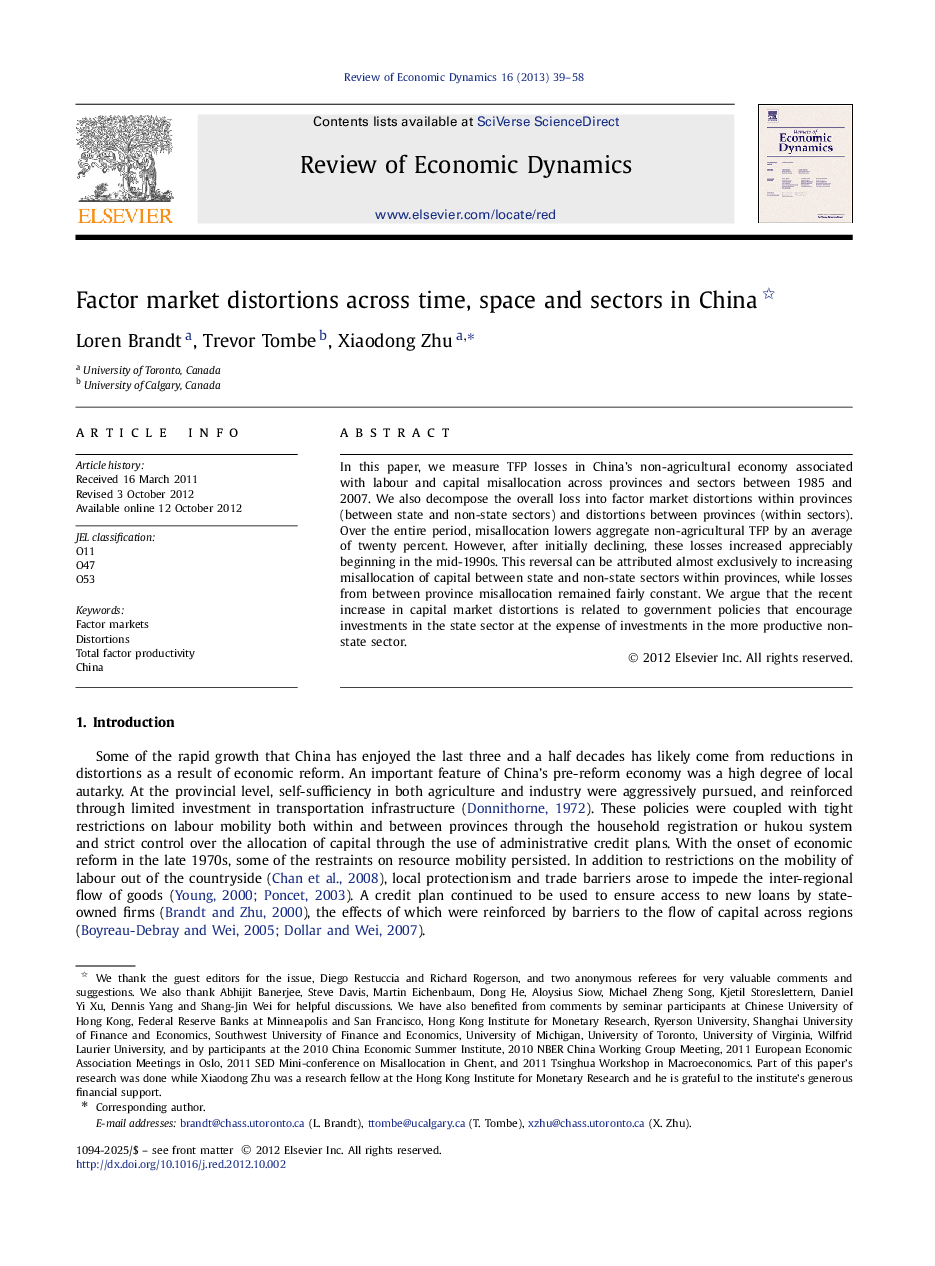| Article ID | Journal | Published Year | Pages | File Type |
|---|---|---|---|---|
| 986919 | Review of Economic Dynamics | 2013 | 20 Pages |
In this paper, we measure TFP losses in Chinaʼs non-agricultural economy associated with labour and capital misallocation across provinces and sectors between 1985 and 2007. We also decompose the overall loss into factor market distortions within provinces (between state and non-state sectors) and distortions between provinces (within sectors). Over the entire period, misallocation lowers aggregate non-agricultural TFP by an average of twenty percent. However, after initially declining, these losses increased appreciably beginning in the mid-1990s. This reversal can be attributed almost exclusively to increasing misallocation of capital between state and non-state sectors within provinces, while losses from between province misallocation remained fairly constant. We argue that the recent increase in capital market distortions is related to government policies that encourage investments in the state sector at the expense of investments in the more productive non-state sector.
► We examine the effect of resource misallocation in China. ► We find that TFP losses associated with factor market distortions are still high in China. ► After an initial decline, TFP losses have increased sharply since the mid-1990s. ► The rising TFP losses are mainly due to capital misallocation within provinces. ► Government policies that encourage state investment over non-state are likely responsible.
